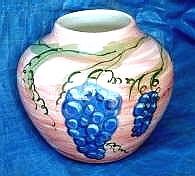I've fired many hundreds of dinnerware items, with the non-leaded glaze. While it's best to practically slop on the glaze, it's also very easy to get too much or puddling.
Puddling of the glaze will cause a cloudy appearance. If after firing, you find areas that are cloudy, this is due to thicker glaze in that area. It didn't completely melt. Your best bet is to try firing again, giving the piece plenty of room so that there is even heat all around.
Sometimes, you've simply added too much glaze and there's nothing you can do to save the piece.
Learn to add your glaze, 3 layers thick, very evenly without puddling. It takes practise and getting to know the glaze.
Areas where a drip formed, can be drimmeled off, add another thin layer of glaze and refire.
Adjust contrast of a pdf free
-
Closer to the eye of the shooter, this is because Preview is quite
literally applying a filter to each individual page of the PDF you are
saving. the proce...





